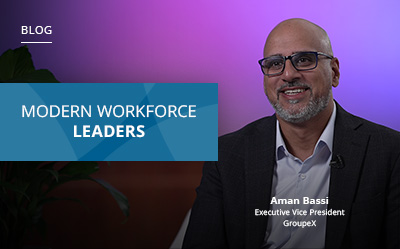The following features our conversation with Sudeep Dev, Senior Vice President & Chief Human Resources Officer at Volvo Eicher Commercial Vehicles Limited, about the role change management plays in improving workplace culture, embracing new technologies for streamlining processes, and the importance of workforce diversity and skills.
This interview is part of our Modern Workforce Leader Series—Manufacturing Edition which spotlights manufacturing industry experts and is an excerpt from our The State of the Manufacturing Workforce in 2024 and Beyond report.
WHAT INDUSTRY CHANGES HAVE OCCURRED THAT CHANGED HOW YOU MANAGE EMPLOYEES?
In India, we set up a state-of-the-art plant during COVID-19 with a capacity of more than 100,000 trucks. The biggest thing we learned when we designed and implemented Industry 4.0 and Internet of Things (IoT) solutions in the factory was the importance of flexibility and correctly assessing the skill level of the workers that run the shop floor, so we could assign them to the right shifts.
With advanced workforce management and IoT-enabled systems and applications, we could have a broad overview of plants and shifts and identify areas to deploy workers with suitable skills. That flexibility was invaluable in helping us address unforeseen absenteeism and achieve a completely error-free vehicle production line with zero quality issues.
HOW IMPORTANT ARE UPSKILLING OPPORTUNITIES FOR KEEPING WORKERS ENGAGED?
Technology is changing very fast today in our industry, with new emission standards that must be adhered to and new types of fuel—ranging from compressed natural gas (CNG) to hydrogen—that we must be familiar with.
It’s essential that my operators have the knowledge to work on the components for different engines on the shop floor, which is why we require a lot of upskilling and mandatory continuous learning. Providing continuous upskilling, education, and training opportunities is an ongoing and important process for us to maintain our quality and meet changing statutory standards.
HOW DO YOU EFFECTIVELY ENGAGE WITH WORKERS ACROSS DIFFERENT DEMOGRAPHICS?
Today’s workforce is very tech-savvy, especially the younger generation. Many people in India use smartphones and are very comfortable using mobile applications daily.
Understandably, there are challenges with some Gen X and older generations who are not used to new tech-driven solutions, as they are more familiar with offline and traditional solutions. It’s a significant change in the management process they have to undergo. Fortunately, they have gradually accepted this digital transformation with the help of reverse mentoring, where younger employees teach older employees.
WHERE DO YOU SEE YOUR FUTURE TECHNOLOGY SPEND IN THE NEXT FEW YEARS?
We focus on creating a better employee experience through new digital solutions. For instance, how to resolve employee grievances quickly and effectively.
However, our objective is not to track our employees for the sake of tracking. Our objective is to develop trust in our workers and empower them with the ability to improve their productivity and efficiency through these digital solutions. And this is our main goal—to drive higher levels of productivity and customer satisfaction.
WHAT ARE SOME STRATEGIES THAT HAVE HELPED WITH WORKFORCE DIVERSITY?
We identified a few technical institutes and supported them in their candidate selection process, while mandating that at least 30% to 40% of the candidates must be female. We also assured these institutes that we would recruit at least 70% to 80% of their students based on performance and commitment levels. We designed a curriculum with them that is industry-oriented and based on current technology requirements.
We also sent our managers to these institutes to deliver lectures as part of their curriculum. This helped the students better understand current industry needs and build competence around real-world industry requirements. This way, we form an academic partnership and support them right from the training phase to the recruitment stage.
WHAT ADVICE DO YOU HAVE FOR OTHER LEADERS ON WORKFORCE MANAGEMENT?
As leaders, we should provide a conducive and positive workplace environment so that workers are able to perform their best. This also means encouraging and empowering them to be more involved in decision-making processes.
Senior members of the team should embrace this and engage with workers meaningfully, providing all the support that workers need for greater professional growth. This means finding ways to connect with workers regularly to ensure that their physical and mental well-being are taken care of and that they can perform their tasks well.
Like this excerpt? Read more interviews with industry experts and explore manufacturing technology trends in the full report, The State of the Manufacturing Workforce in 2024 and beyond!





